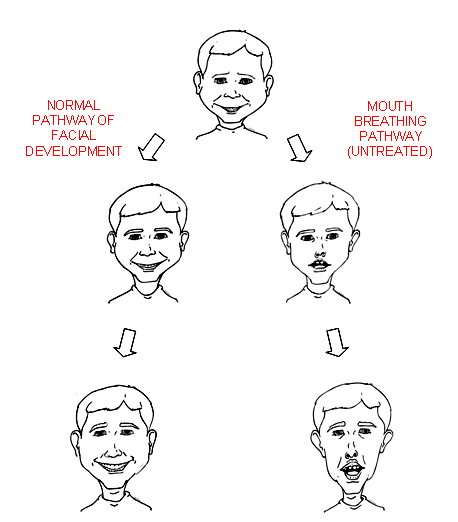 |
| This is how Tami felt! |
Read on!!
As a dental hygienist, I often feel like I'm a dental detective. I love figuring out what's going on in someone's mouth, and then, how best to help them on their way to wellness. Stopping tooth decay, dry mouth, gum disease, oral hygiene challenges, and sleep apnea are the things I see on a daily basis. I've done many blog posts about all these issues.
Then along came my youngest daughter with something that stumped me. Tami is a competitive rope jumper and a high achieving student in high school. She takes advanced courses and has been under high stress since ninth grade. Suddenly, or maybe gradually (it's hard to think back that far back), she started burping. Deep, loud, unladylike burps- super burps from this lovely young lady. I thought she was doing this to be an annoying teenager. Wrong. Then, I assumed she'd grow out of this. No dice. We started with our family doctor, who prescribed pills that worked for about a month. We took her to a gastroenterologist and had tests done. They were stumped too. After a month and a follow up appointment, they had a diagnosis, "Aerophagia". I did some research and found instead Tami had something a little different. They wanted her to see a psychologist since they thought it was nerves; she was doing this to herself. I knew she was swallowing air but didn't know what to do about it. So, I put my detective hat on to help my suffering child. Here's the success story!
 |
| Tami has many other talents |
First, I had her try a hypnotherapist. Since the doctor said it was all psychological, I reasoned, let's help her relax. Things improved somewhat, but nowhere near enough to say she was cured. What the hypnotherapy did for her was help her overcome her reluctance to do back handsprings while jumping rope. She conquered her fear, thanks to hypnosis. Unfortunately for Tami, her burping did not reduce in frequency for long. It was now interfering with her ability to do jump rope speed events (hurting her scores and endurance during practice and competition), as well as bothering her during tests at school. Her coaches, fortunately, have been understanding through all of this, but I can only imagine how disheartening it must be to be held back by something as trivial as burping while your teammates improve.
Lately, I've been reading about sleep apnea, snoring and hyperventilation. Breathing correctly is very important. I did a blog post on it-- read more about breathing in Breathing - Not Everyone is Doing it Right. This led me to start learning about swallowing, and improper swallowing. There is a profession called Myofunctional Therapy that teaches both adults and children how to do this correctly. Since we swallow upwards of 1000 times a day, where the tongue is both at rest and during movement is vital. I found Tami a Myofunctional Therapist. Her name is Amy Schuldt, and she's a dental hygienist in addition to being a myofunctional therapist. She'd never heard of supragastric belching (most often myofunctional therapy addresses tongue thrusting, thumb or other finger sucking, crowded teeth, jaw pain, and oral habits) but was willing to see if teaching Tami how to swallow properly might be helpful. Tami started therapy in October, where she got a series of oral exercises to perform. Essentially, Amy was having Tami train her tongue to rest on the roof of her mouth, as well as conditioning her lips and tongue to swallow properly. And, incredibly, after just two weeks of twice daily exercises, Tami's supragastric belching improved immensely! Tami is much more aware of her tongue's rest position, and realized she was not placing it in "the Spot" on the roof of her mouth, behind her front teeth. Just this change alone made a big difference for her! I know that working with a myofunctional therapist was the right course for Tami. She is happy with her progress, is now able to do speed practice in jumprope, and no longer has that burp bubbling up, causing her pain in her chest from trying to stifle during school. She's good about doing these exercises, they are not difficult, and she sees the benefit. It's not cured yet, but she's well on her way. We're all amazed and very thankful it's worked so quickly!
So why did this work? Supragastric belching is a learned behavior, so it can be unlearned. The tongue is a muscle, just like our other muscles and can grow large and flabby, just like our other muscles. The theory is that conditioning the tongue and lips, and placing them in the proper position helps remind Tami not to swallow air. Since Tami was also thrusting her tongue forward when she swallowed, she did have some "bad" habits that encouraged her to swallow air.
Myofunctional therapy is an unknown career but such an important one! One of the folks who trains dental hygienists in orofacial myofunctional therapy (OMT) is a lady named Joy Moeller. Breathing, eating, sleeping, snoring, sleep apnea, swallowing and even appearance can be improved by working with an OMT therapist. Listen to Joy talk about what OMT can do to help you live a better, fuller life! As crazy as it sounds, it really does all start with breathing correctly!
If you have the super burps (or any of the other behaviors I mentioned before)- Amy Schuldt can work with you through Skype. She can mail you the supplies, and teach you through the computer! Anyone can benefit! I have read the threads from people truly suffering with supragastric belching, and the pain in these threads is heartbreaking. Add supragastric belching to what OM therapy can successfully improve. Contact Amy for help in conquering this habit! If you or someone you know burps a lot, let them know it can indeed be addressed and life can improve!
Update July 5, 2015: Tami has been faithfully doing her myo exercises since October. She will continue for a full year. The difference is HUGE! She is cured! Burping is no longer any part of her life. She's back to exercising and being the fun, happy teenager she was before. I was so impressed with the effectiveness of myo functional therapy, I took the training and became a myofunctional therapist myself! The exercises are easy to perform, they reprogram your breathing, swallowing, and other oral muscles. It really works and I'm excited to join this professional group of out of the box thinkers and doers.
Til Next Week,
Keep Smiling!
Barbara


















































